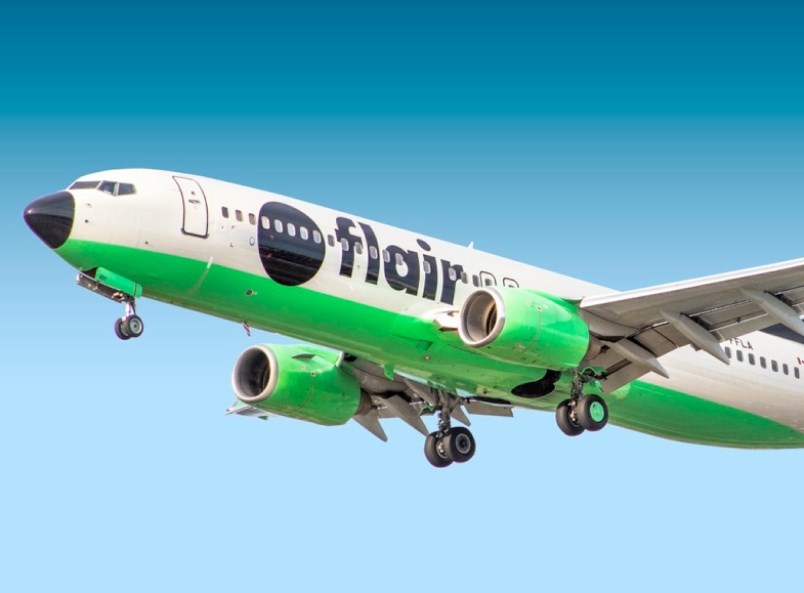THUNDER BAY — Travellers hoping to fly to Toronto on low-fare airline Flair will have to book with another carrier for a period of six months.
Flair is suspending service between Thunder Bay and Toronto from the end of April to the end of October.
The carrier uses Boeing 737 aircraft, which can't safely land at Thunder Bay Airport while improvements are made to the runway this year.
For the same reason, Air Canada will temporarily switch service in Thunder Bay from its regional jets to De Havilland Q400 turboprop aircraft.
Edmonton-based Flair began service to Thunder Bay as part of a major expansion in the late spring of 2021.
Airport CEO Ed Shmidtke says the airline is pleased with how the local market has responded.
In a statement to TBnewswatch, Flair confirmed it's "committed to the Thunder Bay market" and plans to resume service at the beginning of November once the runway work is reopened.
Schmidtke described the rehabilitation of the airport's primary runway "a big job."
The work includes digging down several metres to facilitate subsurface repair and drainage improvements, and installing state-of-the-art LED lighting.
This requires closing the main runway from about mid-May until well into October.
Schmidtke said Air Canada, Westjet and Porter are still able to use the shorter secondary runway for their Q400 aircraft.
He noted that those airlines plan to add more flights in Thunder Bay over the summer period when travel is expected to pick up.
"In many ways, it's a back-to-the-future scenario. There was a time when we only saw Q400 service. To the consumer, save for Flair, it's going to look like it used to look."
Schmidtke said the improvements on the runway won't necessarily be noticeable to passengers once they're completed.
"Infrastructure restorations never really look like anything when they're done. It's about everything under the ground, everything that ensures the runway stays safe when you're arriving and departing Thunder Bay."
He credited the federal government's funding support for the project with keeping the airport's debt-servicing costs down, thereby enabling it to keep the fees it charges airlines as low as possible "which is a big part of attracting more and new service in the future."
According to Schmidtke, this is the first time Thunder Bay Airport has received federal money for this kind of work since the local airport authority was formed in 1997.
He said it helps to ensure Thunder Bay Airport remains one of only two airports in Canada that don't charge an airport improvement fee.
At other airports, the fee is added to the cost of each passenger's ticket.
